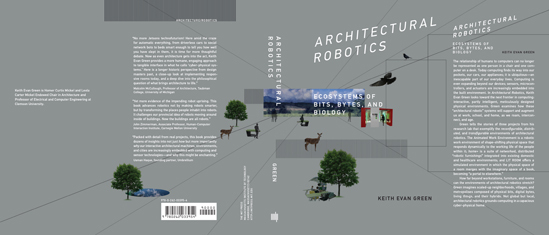Quick Take:
Is This the Future of Living Spaces?
Simplified Overview:
Engineers at Cornell University have developed a robot capable of building rooms within minutes, solving accessibility and space problems. This technology has the potential to revolutionize the way we live and work. Check out the original article for more information.
Insider Look:
Space-Making Robot Rooms Show Promise for Practicality and Escape
In a recent study, Cornell University researchers have introduced a unique space-making robot that can create rooms on demand, providing new ways to design and configure environments. The technology could be particularly useful for small, cramped apartments or emergency situations where temporary spaces need to be created. The robots are equipped with 3D printing capabilities and can fabricate furniture and other items, as well as build walls and partitions. While there are some potential drawbacks to the technology, such as cost and safety concerns, the possibilities for innovation are promising.
The researchers have developed a system that can scan an environment and map it out in 3D, allowing the robot to understand the space and create customized designs for different areas. The robot can then 3D print walls and furniture to fit the specific needs of the space. The technology could also be useful in emergency situations, such as natural disasters, where temporary structures need to be quickly built to provide shelter.
While there are potential drawbacks to the technology, such as cost and safety concerns, the possibilities for innovation are promising. The technology could help solve the problem of overcrowding in cities by providing more efficient use of space, and it could also be used in the construction industry to create customized, on-demand structures.
Overall, the space-making robot technology has the potential to revolutionize the way we design and configure spaces, providing new opportunities for innovation and creativity.
In a recent study, Cornell University researchers have introduced a unique space-making robot that can create rooms on demand, providing new ways to design and configure environments. The technology could be particularly useful for small, cramped apartments or emergency situations where temporary spaces need to be created. The robots are equipped with 3D printing capabilities and can fabricate furniture and other items, as well as build walls and partitions. While there are some potential drawbacks to the technology, such as cost and safety concerns, the possibilities for innovation are promising.
The researchers have developed a system that can scan an environment and map it out in 3D, allowing the robot to understand the space and create customized designs for different areas. The robot can then 3D print walls and furniture to fit the specific needs of the space. The technology could also be useful in emergency situations, such as natural disasters, where temporary structures need to be quickly built to provide shelter.
While there are potential drawbacks to the technology, such as cost and safety concerns, the possibilities for innovation are promising. The technology could help solve the problem of overcrowding in cities by providing more efficient use of space, and it could also be used in the construction industry to create customized, on-demand structures.
Overall, the space-making robot technology has the potential to revolutionize the way we design and configure spaces, providing new opportunities for innovation and creativity.
Key Takeaways:
Story Highlights in 3 words:
Innovative, Practical, Futuristic
Winners & Losers:
Pros:
Innovative technology that solves space and accessibility issues.
Cons:
Limited application and potential concerns over job displacement.
Bottom Line:
The space-making robot promises to revolutionize living spaces and provide practical solutions for accessibility and space issues.

Ref.
Join The Conversation!





